Top 10 Animals You'd Least Want to Get Bitten By
From the smallest insects to the largest predators, every creature has its role in the grand tapestry of life. But it's also true that nature can be fierce, and some animals are equipped with bites that would make anyone think twice about getting too close. Some have sharp teeth, others powerful jaws, venom, or even bacteria that can turn a bite into a serious problem.As you dive into this topic, it's not just about the scare factor. It's also a chance to marvel at the incredible diversity and survival strategies in the animal kingdom. Each creature we'll discuss has evolved its unique bite as a means of survival - for hunting, for defense, or sometimes for both.
But rest assured, there's no need to start looking over your shoulder. Most of these animals prefer to steer clear of humans if they can help it. In fact, the odds of getting bitten by many of them are incredibly low. But, it's always interesting, and beneficial, to know more about the creatures we share our planet with, isn't it?
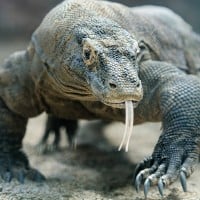 A bite from a Komodo Dragon is nothing short of dangerous. These large lizards possess a potent mix of venom, resulting in rapid blood loss, muscle paralysis, and severe shock. The aftermath often involves intense pain, swelling, and sometimes, serious infections due to the bacteria present in their saliva. Without immediate medical attention, the outcome could be fatal.
A bite from a Komodo Dragon is nothing short of dangerous. These large lizards possess a potent mix of venom, resulting in rapid blood loss, muscle paralysis, and severe shock. The aftermath often involves intense pain, swelling, and sometimes, serious infections due to the bacteria present in their saliva. Without immediate medical attention, the outcome could be fatal. Komodo dragon (Varanus komodoensis) is a large species of lizard found in Komodo Island, Indonesia. It's the largest lizard species found
Very venomous, aggressive, fast. Enough said.
Once it bites you, you'll die over a few weeks thanks to its bacteria/venom.
Komodos are not "venomous." Their mouths are filthy with virulent bacteria.
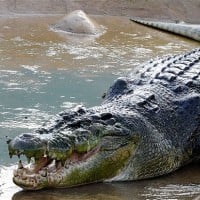 The formidable jaws of a crocodile deliver a forceful, crushing bite. This can result in severe injury, including tissue damage and bone fractures. Due to the bacteria in a crocodile's mouth, secondary infections are also a significant concern, which can complicate the healing process and result in long-term physical impairment if left untreated.
The formidable jaws of a crocodile deliver a forceful, crushing bite. This can result in severe injury, including tissue damage and bone fractures. Due to the bacteria in a crocodile's mouth, secondary infections are also a significant concern, which can complicate the healing process and result in long-term physical impairment if left untreated. Crocodiles have the strongest bite force out of any animal. This is fitting for number 1.
Powerful jaws crushing bones, sharp teeth piercing through skin...
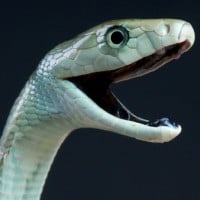 A black mamba's bite is synonymous with a swift and potent venomous strike. The venom is neurotoxic, leading to symptoms such as blurred vision, difficulty in breathing, and paralysis. Without timely administration of antivenom, it can lead to respiratory failure and may even prove fatal. Immediate medical intervention is critical in such instances.
A black mamba's bite is synonymous with a swift and potent venomous strike. The venom is neurotoxic, leading to symptoms such as blurred vision, difficulty in breathing, and paralysis. Without timely administration of antivenom, it can lead to respiratory failure and may even prove fatal. Immediate medical intervention is critical in such instances. It's also the fastest snake. Running away from it won't be an easy task
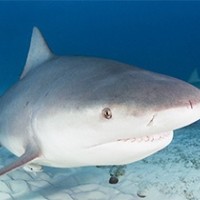 A bull shark's bite, known for its power and aggression, can cause grave damage. Its sharp, serrated teeth are designed to tear flesh, causing deep wounds and significant blood loss. A bite from this shark can lead to severe injury, including possible loss of limbs. Swift medical assistance is essential to manage the trauma and prevent infection.
A bull shark's bite, known for its power and aggression, can cause grave damage. Its sharp, serrated teeth are designed to tear flesh, causing deep wounds and significant blood loss. A bite from this shark can lead to severe injury, including possible loss of limbs. Swift medical assistance is essential to manage the trauma and prevent infection. Deadliest of all sharks. They've been known to attack humans for no known reasons and are responsible for more human deaths each year than any other shark.
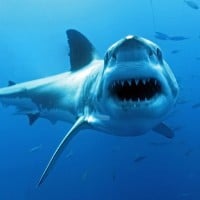 The Great White Shark's bite is particularly devastating due to its large size and formidable teeth. The injury can range from deep lacerations to potential amputations, accompanied by profuse bleeding. Such severe trauma requires immediate emergency medical care to prevent life-threatening blood loss and handle secondary complications.
The Great White Shark's bite is particularly devastating due to its large size and formidable teeth. The injury can range from deep lacerations to potential amputations, accompanied by profuse bleeding. Such severe trauma requires immediate emergency medical care to prevent life-threatening blood loss and handle secondary complications.
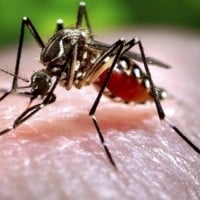 A mosquito bite seems trivial compared to the others, yet it can lead to serious health consequences. Mosquitoes are vectors for diseases like malaria, dengue, and Zika virus. The initial bite may cause itchiness and a small welt. However, if the mosquito is a disease carrier, symptoms such as fever, body aches, and more severe complications can follow.
A mosquito bite seems trivial compared to the others, yet it can lead to serious health consequences. Mosquitoes are vectors for diseases like malaria, dengue, and Zika virus. The initial bite may cause itchiness and a small welt. However, if the mosquito is a disease carrier, symptoms such as fever, body aches, and more severe complications can follow. Not only that it leaves SUPER ANNOYING ITCHES, but it spreads some of the deadliest diseases known
Note: Last time I said that chances of getting bitten by the animals in this list is low, but that doesn't apply to this animal...
I got bitten by this once. It was not nice.
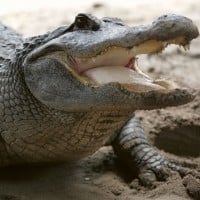 An alligator's bite packs a formidable force, capable of causing serious damage. The immediate effect can include deep puncture wounds, bone fractures, or even amputations. Besides the trauma, bacterial infections from the alligator's mouth flora can lead to complications, making prompt and comprehensive medical care crucial.
An alligator's bite packs a formidable force, capable of causing serious damage. The immediate effect can include deep puncture wounds, bone fractures, or even amputations. Besides the trauma, bacterial infections from the alligator's mouth flora can lead to complications, making prompt and comprehensive medical care crucial.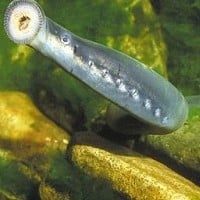 When a lamprey latches onto a victim, it uses its suction-cup mouth filled with sharp teeth to rasp away flesh and feed on the blood of its host. A bite from this creature can cause substantial skin damage and blood loss. The resulting wound requires prompt medical care to avoid infection and facilitate healing.
When a lamprey latches onto a victim, it uses its suction-cup mouth filled with sharp teeth to rasp away flesh and feed on the blood of its host. A bite from this creature can cause substantial skin damage and blood loss. The resulting wound requires prompt medical care to avoid infection and facilitate healing.
 A goblin shark's bite, though rare due to the deep-sea habitat of the species, could potentially cause significant injury. Its protrusible jaws with sharp teeth can inflict deep wounds that could lead to substantial blood loss and risk of infection. Immediate medical attention is necessary to clean and properly dress the wound.
A goblin shark's bite, though rare due to the deep-sea habitat of the species, could potentially cause significant injury. Its protrusible jaws with sharp teeth can inflict deep wounds that could lead to substantial blood loss and risk of infection. Immediate medical attention is necessary to clean and properly dress the wound. Goblin shark (Mitsukurina owstoni) is a rare species of deep-sea-dwelling shark and is the only member of the genus Mitsukurina remaining (others are extinct). Often referred as the "living fossil".
Lots of thin, sharp, long, needle-like teeth piercing through your body over and over again. Considering I have a fear of needles, this is terrifying.
Very unlikely to happen because it lives very far below the surface of the ocean.
 A dog bite can range from minor to severe, depending on the breed and the circumstances. At best, it can result in a small puncture wound, but in more serious cases, it can lead to deep lacerations or tissue loss. A risk of rabies and other bacterial infections also exists, so it's necessary to clean the wound thoroughly and seek medical attention.
A dog bite can range from minor to severe, depending on the breed and the circumstances. At best, it can result in a small puncture wound, but in more serious cases, it can lead to deep lacerations or tissue loss. A risk of rabies and other bacterial infections also exists, so it's necessary to clean the wound thoroughly and seek medical attention. Especially if it's wild and not vaccinated. You might get rabies
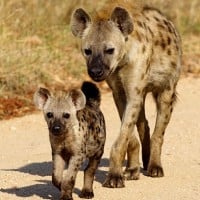 A hyena's powerful jaws deliver a bite that can crush bone. The injury from such an encounter can result in severe lacerations, broken bones, and potential tissue loss. The wound may also become infected due to bacteria in the hyena's mouth, warranting immediate medical attention and likely requiring antibiotics.
A hyena's powerful jaws deliver a bite that can crush bone. The injury from such an encounter can result in severe lacerations, broken bones, and potential tissue loss. The wound may also become infected due to bacteria in the hyena's mouth, warranting immediate medical attention and likely requiring antibiotics. Whether if it's spotted, striped or brown... It has one of the strongest bites in the animal kingdom. You may not want to touch one.
Hyenas have stronger jaws than Alligators and are ruthless killing machines. As soon as their teeth sink into your skin, you're a goner
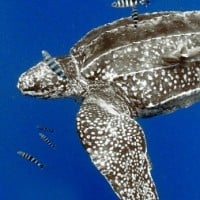 A bite from a Leatherback Turtle, though uncommon, can be quite painful and damaging. Its sharp beak is capable of tearing through flesh, leading to a risk of significant bleeding and possible infection. It's necessary to promptly clean and treat the wound, keeping a keen eye out for any signs of infection.
A bite from a Leatherback Turtle, though uncommon, can be quite painful and damaging. Its sharp beak is capable of tearing through flesh, leading to a risk of significant bleeding and possible infection. It's necessary to promptly clean and treat the wound, keeping a keen eye out for any signs of infection. Leatherback turtle (Dermochelys coriacea) is a species of turtle. It's the largest turtle species, and also the only member of the genus Dermochelys.
It looks like an adorable, innocent animal, until you look at what's inside the mouth. hundreds of sharp, spike-like teeth piercing prey from all direction.
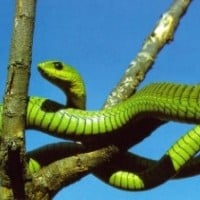 The Boomslang snake's bite injects a potent hemotoxic venom. Initial symptoms may be mild, including headache and nausea, but severe complications such as internal and external bleeding can occur if left untreated. It's vital to seek immediate medical help and administer antivenom to counteract the venom's effects.
The Boomslang snake's bite injects a potent hemotoxic venom. Initial symptoms may be mild, including headache and nausea, but severe complications such as internal and external bleeding can occur if left untreated. It's vital to seek immediate medical help and administer antivenom to counteract the venom's effects. Boomslang (Dispholidus typus) is a large species of venomous snake native to Sub-Saharan Africa
The bite of this snake gives a terrifying effect. You'll bleed from all openings on your body
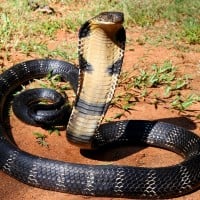 The bite of a King Cobra is an extremely dangerous event. It injects a powerful neurotoxin that can lead to symptoms like severe pain, blurred vision, vertigo, and eventually paralysis. If not treated swiftly with the appropriate antivenom, the bite could result in respiratory failure and can be fatal.
The bite of a King Cobra is an extremely dangerous event. It injects a powerful neurotoxin that can lead to symptoms like severe pain, blurred vision, vertigo, and eventually paralysis. If not treated swiftly with the appropriate antivenom, the bite could result in respiratory failure and can be fatal.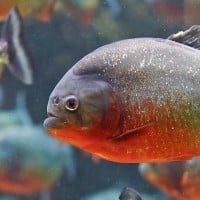 A piranha bite, although typically non-fatal to humans, can be quite painful. These freshwater fish possess razor-sharp teeth capable of tearing flesh, leading to wounds that can bleed significantly. Immediate cleaning and bandaging of the wound is necessary to prevent secondary infections.
A piranha bite, although typically non-fatal to humans, can be quite painful. These freshwater fish possess razor-sharp teeth capable of tearing flesh, leading to wounds that can bleed significantly. Immediate cleaning and bandaging of the wound is necessary to prevent secondary infections. Piranha is a member of the family Characidae
Yes, a piranha is tiny, but a swarm of hungry piranhas can take almost any animal down. Scarier and faster if the victim is covered with blood
 A human bite, while typically less dangerous than many animal bites, still carries the risk of injury and infection. The bite can cause pain, bruising, and break the skin, leading to potential bacterial infections. Medical attention is necessary if the skin is broken, the bite is from a stranger, or the bitten individual has a weakened immune system.
A human bite, while typically less dangerous than many animal bites, still carries the risk of injury and infection. The bite can cause pain, bruising, and break the skin, leading to potential bacterial infections. Medical attention is necessary if the skin is broken, the bite is from a stranger, or the bitten individual has a weakened immune system. The cookie cutter shark, despite its small size, can inflict a uniquely round, cookie-like wound. The shark's suction-like lips and circular rows of teeth carve out a chunk of flesh, causing a deep, painful injury that can lead to substantial bleeding. Rapid treatment is necessary to manage the blood loss and prevent infection.
The cookie cutter shark, despite its small size, can inflict a uniquely round, cookie-like wound. The shark's suction-like lips and circular rows of teeth carve out a chunk of flesh, causing a deep, painful injury that can lead to substantial bleeding. Rapid treatment is necessary to manage the blood loss and prevent infection. Cookie cutter shark (Isistius brasiliensis) is a species of dogfish shark
Look at that mouth filled with sharp teeth forming a "sinister smile"...
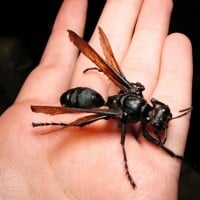 The Tarantula Hawk, a type of wasp, delivers one of the most painful stings in the insect kingdom. Although the pain is excruciating, it often subsides within five minutes, leaving no long-term damage. However, anyone stung by a Tarantula Hawk should monitor for signs of an allergic reaction, such as difficulty breathing.
The Tarantula Hawk, a type of wasp, delivers one of the most painful stings in the insect kingdom. Although the pain is excruciating, it often subsides within five minutes, leaving no long-term damage. However, anyone stung by a Tarantula Hawk should monitor for signs of an allergic reaction, such as difficulty breathing.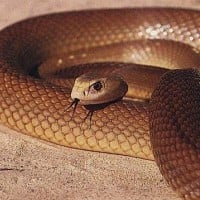 An Inland Taipan's bite is incredibly dangerous due to its potent venom, considered one of the most toxic in the snake world. Symptoms can include headache, vomiting, abdominal pain, and eventually paralysis or internal bleeding. It's critical to seek immediate medical attention, as the venom can prove fatal without prompt administration of the correct antivenom.
An Inland Taipan's bite is incredibly dangerous due to its potent venom, considered one of the most toxic in the snake world. Symptoms can include headache, vomiting, abdominal pain, and eventually paralysis or internal bleeding. It's critical to seek immediate medical attention, as the venom can prove fatal without prompt administration of the correct antivenom. I am glad to not live in Australia where these live.
Most poisonous snake in the world.
 A Black Widow spider bite introduces a neurotoxic venom into the victim's system. Symptoms can include severe muscle pain, abdominal cramps, excessive sweating, and heart palpitations. In rare cases, the venom can lead to severe systemic reactions, requiring immediate medical intervention and possible antivenom administration.
A Black Widow spider bite introduces a neurotoxic venom into the victim's system. Symptoms can include severe muscle pain, abdominal cramps, excessive sweating, and heart palpitations. In rare cases, the venom can lead to severe systemic reactions, requiring immediate medical intervention and possible antivenom administration. A tiger's bite can be devastating, capable of causing severe trauma. Their strong jaws and long, sharp canines can inflict deep wounds, substantial tissue damage, and even bone fractures. Prompt medical attention is crucial to manage the injury, stop excessive bleeding, and prevent secondary infection.
A tiger's bite can be devastating, capable of causing severe trauma. Their strong jaws and long, sharp canines can inflict deep wounds, substantial tissue damage, and even bone fractures. Prompt medical attention is crucial to manage the injury, stop excessive bleeding, and prevent secondary infection.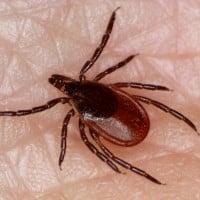 Ticks do not bite in the traditional sense but pierce the skin and feed on blood. A tick bite can transmit diseases such as Lyme disease or Rocky Mountain spotted fever. The bite site might develop a rash, and other symptoms such as fever, weakness, and joint pain may occur. Prompt removal of the tick and medical consultation are advised.
Ticks do not bite in the traditional sense but pierce the skin and feed on blood. A tick bite can transmit diseases such as Lyme disease or Rocky Mountain spotted fever. The bite site might develop a rash, and other symptoms such as fever, weakness, and joint pain may occur. Prompt removal of the tick and medical consultation are advised. A dragonfish, a deep-sea creature, is not typically a threat to humans. However, its bite could theoretically cause injury due to its sharp, fang-like teeth. In such an unlikely event, it's advised to clean the wound immediately and monitor for any signs of infection.
A dragonfish, a deep-sea creature, is not typically a threat to humans. However, its bite could theoretically cause injury due to its sharp, fang-like teeth. In such an unlikely event, it's advised to clean the wound immediately and monitor for any signs of infection. Dragonfish is a deep-sea-dwelling fish
Not only that it has needle-like teeth, it also have "teeth" on its tongue!
 Baboons have large, sharp canine teeth and their bites can lead to deep lacerations and puncture wounds. As with other primate bites, there's a risk of transmitting infections, making it important to seek immediate medical treatment.
Baboons have large, sharp canine teeth and their bites can lead to deep lacerations and puncture wounds. As with other primate bites, there's a risk of transmitting infections, making it important to seek immediate medical treatment. An attack from a hippopotamus, which can involve being bitten or crushed, is among the most dangerous encounters in the animal kingdom. With a tremendously strong jaw and large, sharp teeth, a hippo can cause devastating injuries, including massive tissue damage and broken bones. Immediate emergency medical care is vital following such an incident.
An attack from a hippopotamus, which can involve being bitten or crushed, is among the most dangerous encounters in the animal kingdom. With a tremendously strong jaw and large, sharp teeth, a hippo can cause devastating injuries, including massive tissue damage and broken bones. Immediate emergency medical care is vital following such an incident. Okay you're literally just dead if you get bitten. Or, their mouth is too big for whatever they're biting and you might lose that body part thanks to these guys. Wow, okay